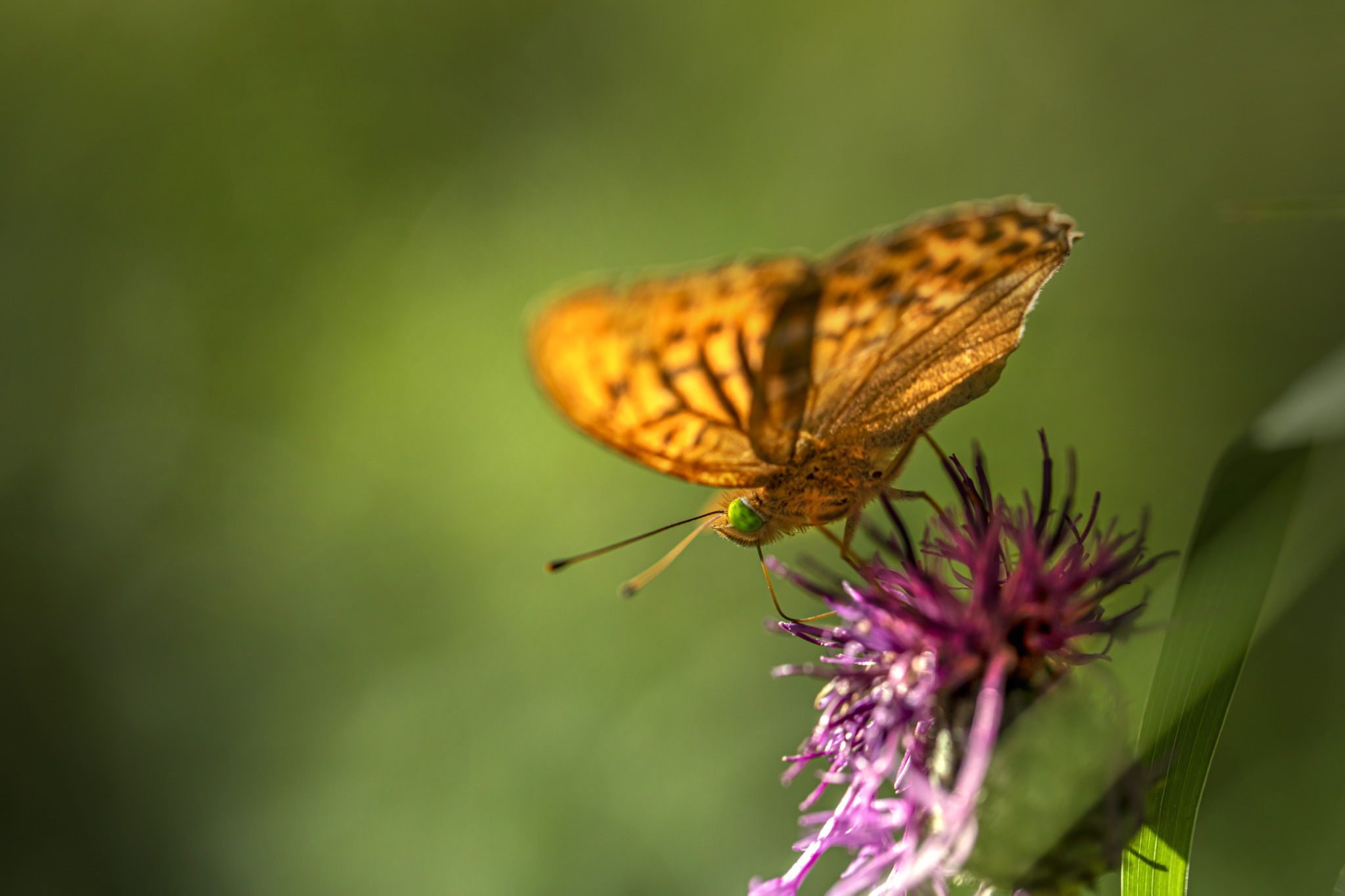The Silver-washed Fritillary (Argynnis paphia) is a striking butterfly species belonging to the family Nymphalidae, which is native to Europe and parts of Asia. Here are some key characteristics and information about this beautiful insect:
- Appearance: The Silver-washed Fritillary is known for its large size and striking coloration. The upper side of its wings is predominantly orange-brown with black spots and markings. The males typically have a distinctive black streak running across the center of their forewings, while females tend to have more subdued markings. The underside of the wings is typically lighter in color with silver streaks, giving the species its name.
- Habitat: This butterfly species inhabits a variety of woodland habitats, including deciduous and mixed forests, as well as wooded grasslands and clearings. They prefer areas with plenty of sunlight and nectar-rich flowers.
- Lifecycle: Like all butterflies, the Silver-washed Fritillary undergoes a complete metamorphosis, consisting of four stages: egg, larva (caterpillar), pupa (chrysalis), and adult. The female lays eggs on or near the host plants of the caterpillars, which typically include violets (Viola species). The caterpillars feed on the leaves of these plants. After pupating, the adult butterfly emerges and begins its relatively short adult life, during which it focuses on mating and nectar feeding.
- Flight Season: The Silver-washed Fritillary is typically seen in flight during the summer months, from June to August in its native range, though this can vary depending on location and climate.
- Behavior: These butterflies are strong and fast fliers, often gliding gracefully through the forest canopy. They are known to be territorial, with males patrolling specific areas to seek out females.
- Conservation Status: The Silver-washed Fritillary is generally considered to be of least concern in terms of conservation status, although it may face localized threats due to habitat loss, fragmentation, and pesticide use.
- Ecological Importance: As pollinators, butterflies like the Silver-washed Fritillary play a crucial role in maintaining ecosystem health and biodiversity by facilitating the reproduction of flowering plants.
Overall, the Silver-washed Fritillary is a charismatic and ecologically important butterfly species that adds beauty and diversity to European and Asian ecosystems.
Visited 780 times, 24 visit(s) today
Views: 1386
Subscribe to the newsletter:
